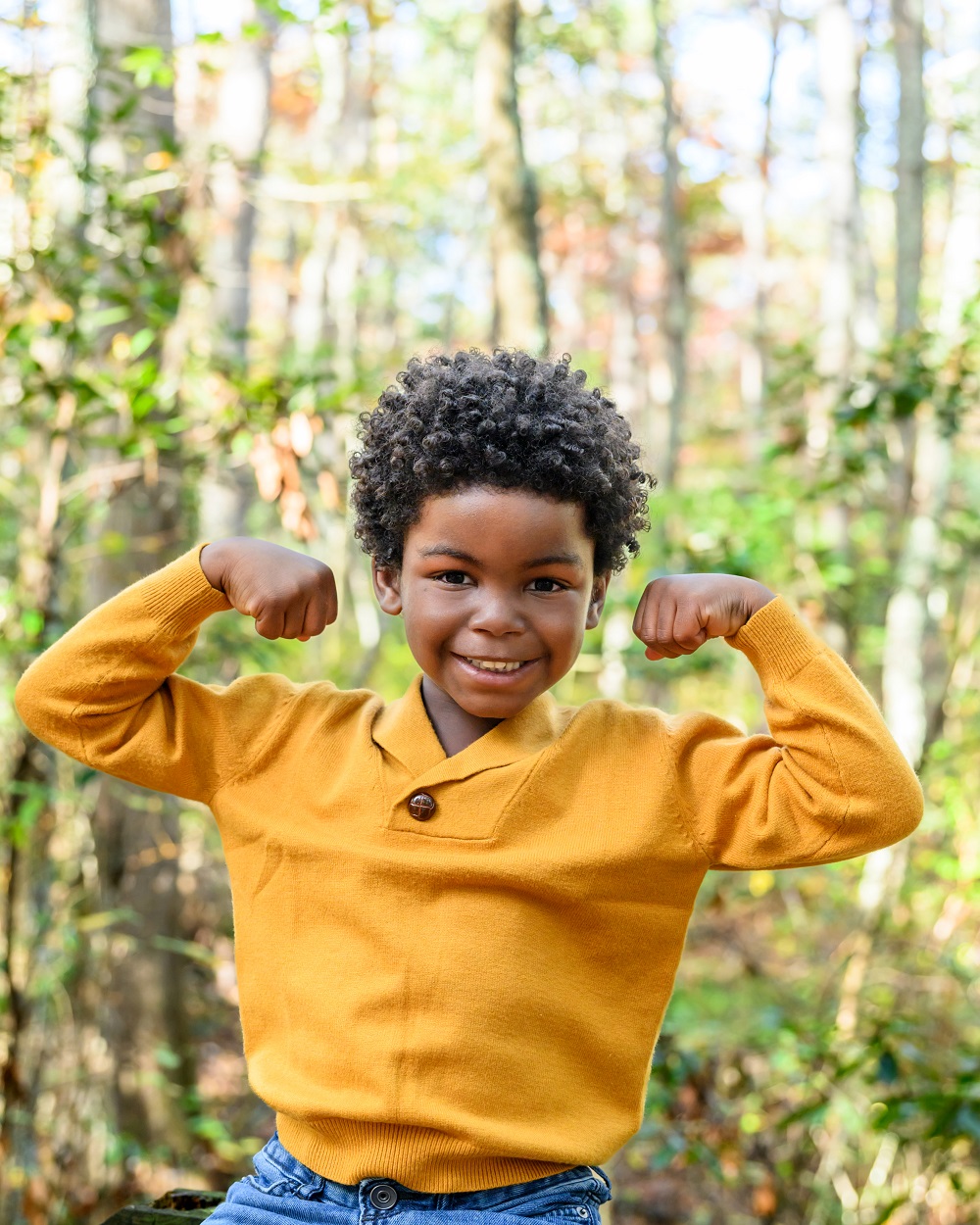Inspirational Stories
Cayden
Philadelphia chromosome-positive acute lymphoblastic leukemia (Ph+ ALL)
Cayden was only three years old when he was diagnosed with Philadelphia chromosome-positive acute lymphoblastic leukemia (Ph+ ALL) in April 2020. Before his diagnosis, Cayden was full of energy, and he loved to eat. But then he started to complain about leg pain. We first thought it was just a growth spurt, but the pain got so bad that he could not walk. He also lost his appetite. That wasn’t like him at all, and I knew something was not right. It was the height of COVID-19, but we took him to the emergency room. All of his tests came back negative. We then talked to his pediatrician, and after many blood tests, Cayden was diagnosed with leukemia. I just remember collapsing in my husband's arms. My hands and feet went numb. My heart was pounding, and I sobbed. Cayden was always a very healthy child, and to go from a healthy, playful, young boy to a leukemia diagnosis was devastating. I just remember being so shocked and overwhelmed, but we did not have the time to process the news because everything moved incredibly fast right after his diagnosis.
Cayden's initial treatment was chemotherapy, and it started within hours of his diagnosis. Cayden experienced side effects from his treatment. He was constantly nauseous. His appetite changed. He would get moody from the steroids that he had to take. In March 2021, he developed sepsis and a fungal lung infection and was hospitalized for over a month. After two years of receiving chemotherapy every day, we celebrated the end of his treatment in April 2022. Then in February 2023, his cancer relapsed. Initially, he received chemotherapy drugs that were similar to his first treatments. He then received a new type of immunotherapy drug called blinatumomab (Blincyto®). He had to wear a bookbag for 30 days so that he could constantly receive medication. Because Cayden’s leukemia is rare and affects only 3% of patients with leukemia and has a high risk of relapse, his doctors suggested the possibility of CAR T-cell therapy.
We went to Duke University in North Carolina for CAR T-cell therapy in May. His doctors collected as many white cells as they could and shipped them off to the company that genetically engineered those cells to create the CAR T-cells. Leading up to the treatment, Cayden had about three days of chemotherapy to prepare his body for the infusion. On the day of his treatment, three nurses infused CAR T-cells into his body, and that was it. He did not need to continue chemotherapy anymore. There were some preventative medications he had to take to protect his lungs and body from infection, but besides that, he was just monitored afterward.
Cayden had been handling everything phenomenally since his initial CAR-T therapy. He experienced a couple of days of nausea, but besides that, he was his normal, playful, little kid self, running around the house and eating. Unfortunately, a couple of months later, the cancer cells were once again detectable. We returned to Duke for another round of CAR-T therapy in October where we remained for another 37 days. Despite this second effort, the leukemia cells were once again detected. Even though the numbers are incredibly low, we are not out of the woods. At the current moment, we are waiting for a bone marrow match or advancement in targeted treatment options. I have been working diligently to set up bone marrow donor drives to try to find a match. Cayden is now seven years old and will be turning eight in September 2024.
